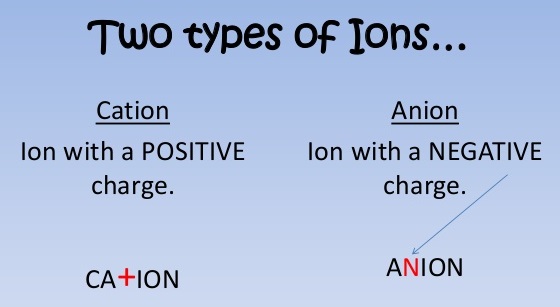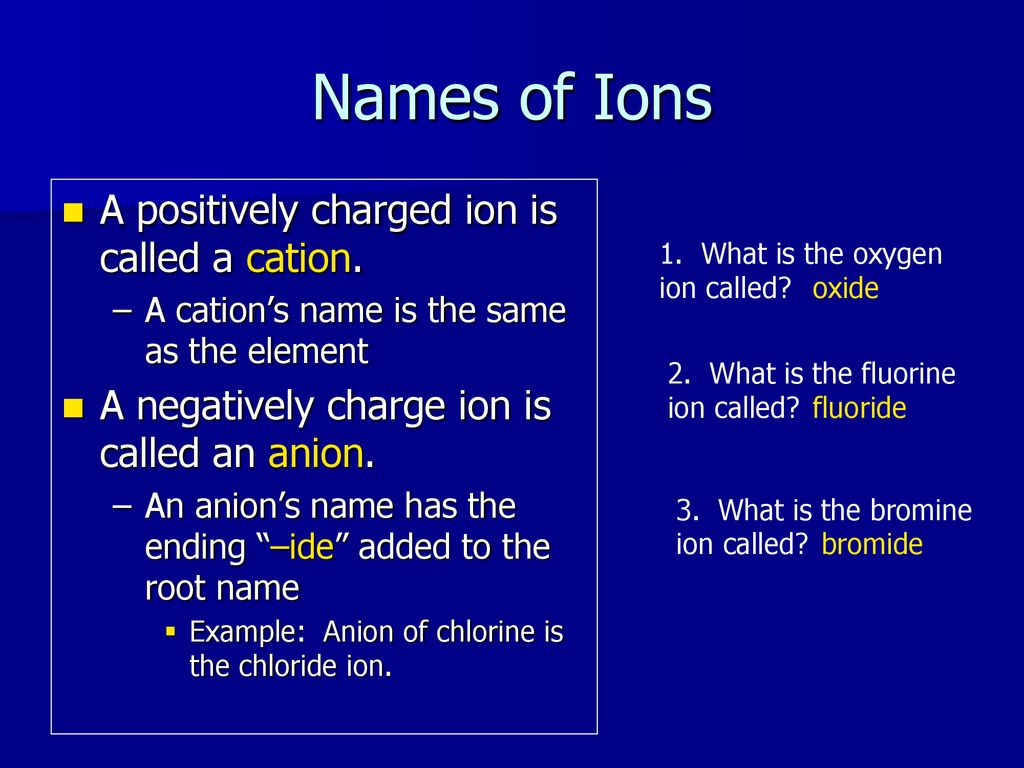Because of their opposite electric charges cations and anions attract each other and readily form ionic compounds. Log in for more information.
 What Are The Two Types Of Ions And How Are They Different A Plus Topper
What Are The Two Types Of Ions And How Are They Different A Plus Topper
An ion is an atom or group of atoms with a positive or negative charge.

A positively charged ion is called. In general an atom with a charge either positive or negative is called an ion. SHOW YOUR WORK - Determine what is t. When an atom loses its electrons then it gains a positive charge due to less number of electrons than protons in its nucleus.
This can only take place when the atom has to get a stable noble gas electronic configuration otherwise a stable atom say He would not lend its electron. A cation is a positively charged ion with fewer electrons than protons while an anion is negatively charged with more electrons than protons. It is often used in protein purification water analysis and quality control.
Likewise if the atom gains at least an electron it then has a net negative. This type of ion is called an anion. To see more answers head over to College Study Guides.
If the atom has more electrons than protons it is a negative ion or ANION. If the basketball has a mass of 063 kg how much force did the player apply to make it accelerate to that speed. A positively charged ion is called an _____.
Then this positively charged species is called cation. Na Al 3 Ce 3 etc. Thus when an atom loses at least an electron it then has more protons than electrons leaving a net positive charge.
Electrolysis is the process. Is a positively charged ion called an anion. A positively charged ion is called a cation.
A positive ion called be called an cation. Molecular ions that contain at least one carbon to hydrogen bond are called organic ions. Jesusrod877 jesusrod877 A negatively charged ion is called an anion.
No it is not called an anion. Is a positively charged ion called an anion. Positive ions are cations and negative ions are anions.
A positively charged atom is called a cation and a negatively charged atom is an Atoms in turn are composed of positively charged protons negatively charged These outer four electrons called valence electrons play an important role in. When an atom gains electrons this results in a negative charge. When an atom loses electrons this results in a positive charge.
This answer has been confirmed as correct and helpful. Confirmed by anthony231052020 24058 AM Get an answer. Ions form when atoms lose or gain electrons to obtain a full outer shell.
A positively charged ion is called a cation. An atom can acquire a positive charge or a negative charge depending on whether the number of electrons in an atom is greater or less then the number of protons in the atom. A positively charged ion is called an anion.
If the charge in an organic ion is formally centred on a carbon it is termed a carbocation if positively charged or carbanion if negatively charged. Electrolysis Ionic substances contain charged particles called ions. For example lead bromide contains positively charged lead ions and negatively charged bromide ions.
Is a positively charged ion called an anion. Atoms that lose electrons acquire a positive charge as a result because they are left with fewer negatively charged electrons to balance the positive charges of the protons in the nucleus. An atom can become a cation when it either looses an electron or donates its to another atom so that it attains a positive charge.
Search for an answer or ask Weegy. A Positivley charged ion is called an. This answer has been confirmed as correct and helpful.
Added 47 days ago1062020 22000 PM. Formation Formation of monatomic ions. Most metals become cations when they make ionic compounds.
Anion-exchange chromatography is when the stationary phase is positively charged and negatively charged molecules meaning that pH for chromatography is greater than the pI are loaded to be attracted to it. Positively charged ions are called cations. Metal atoms lose electrons to form positively.
New questions in Physics. Are examples of cations. The term was coined by Faraday and Whewell.
When an atom is attracted to another atom because it has an unequal number of electrons and protons the atom is called an ION. Those ions which possess positive charge are called cations.